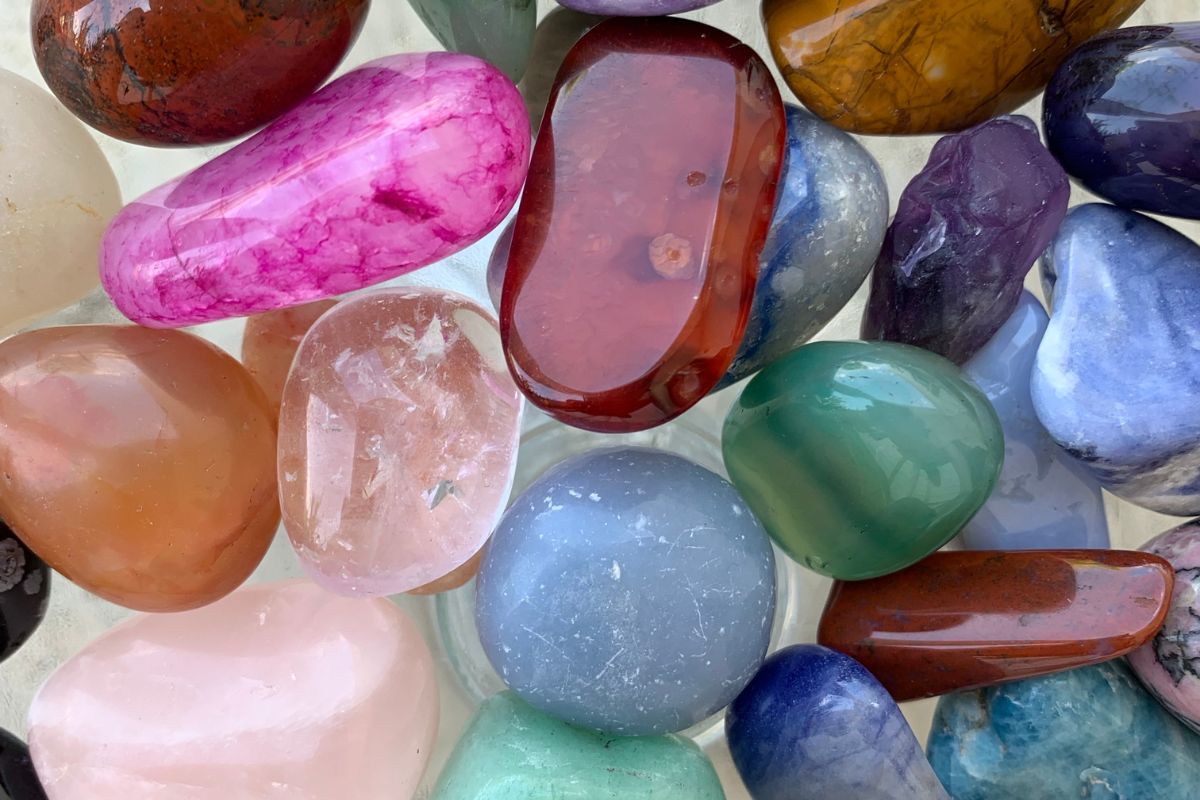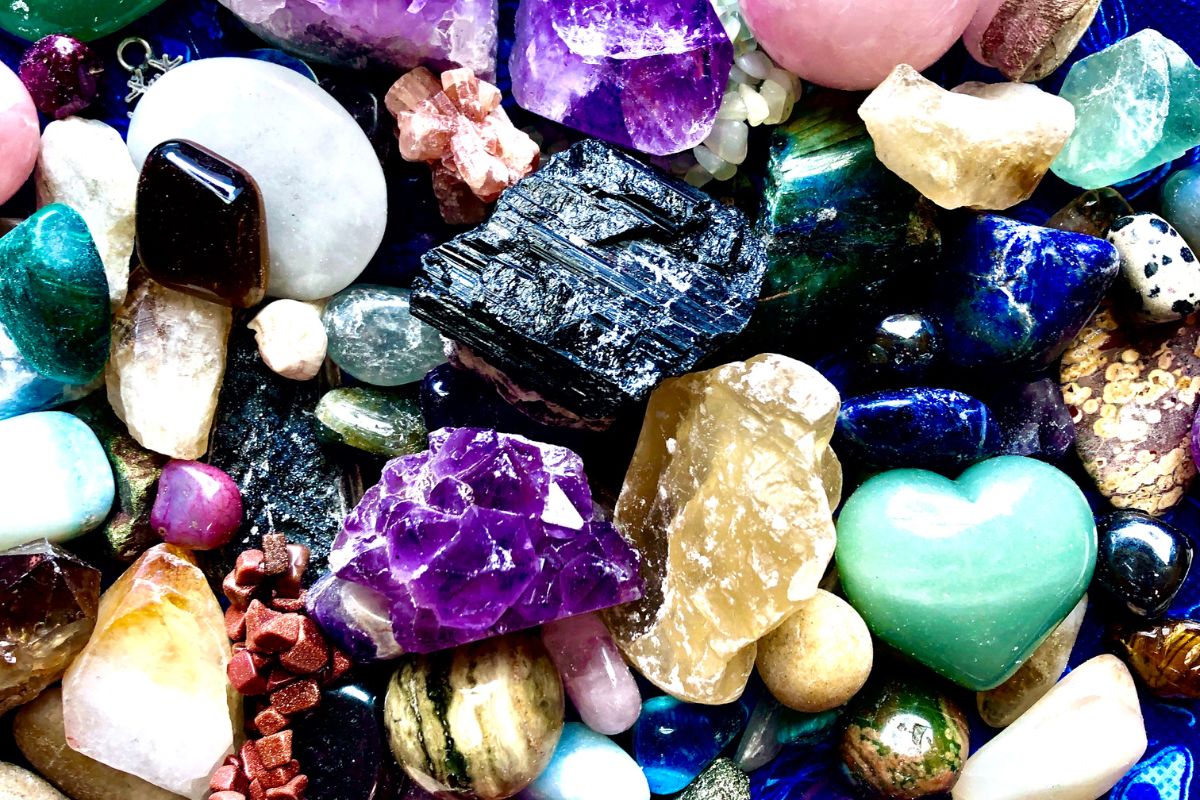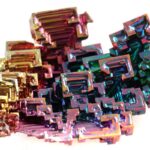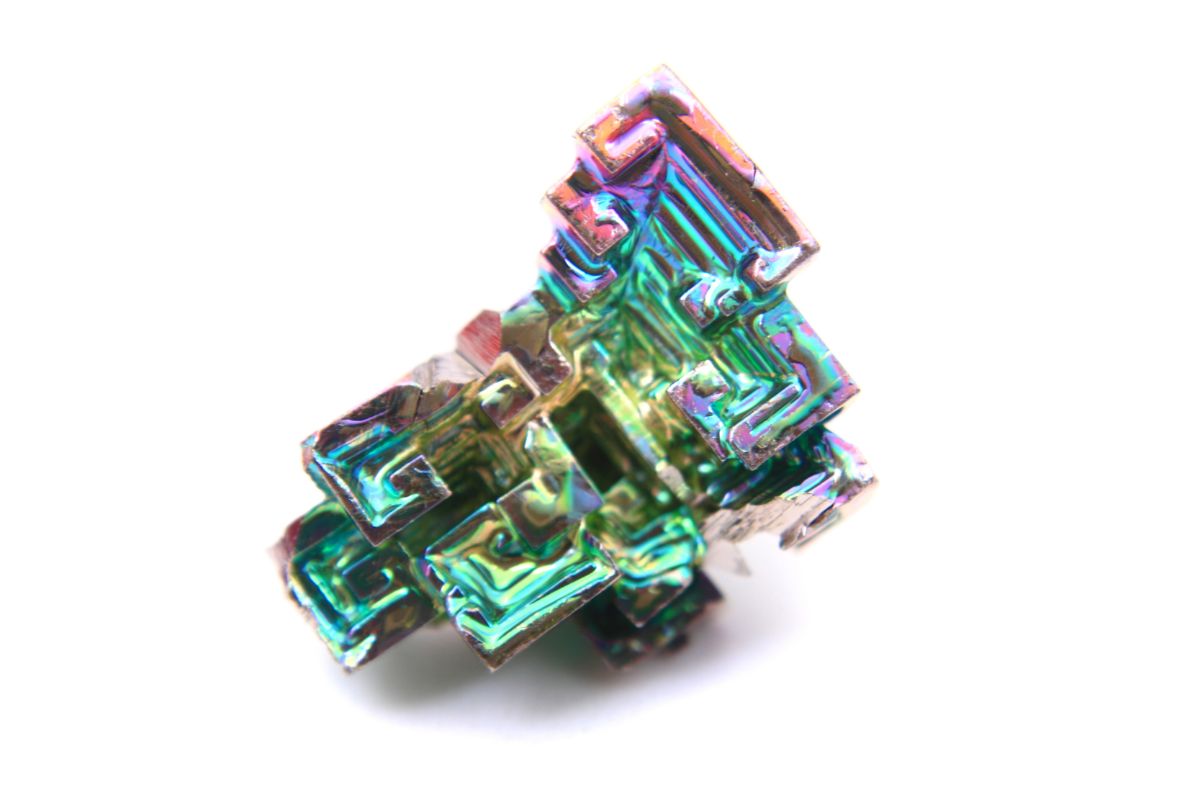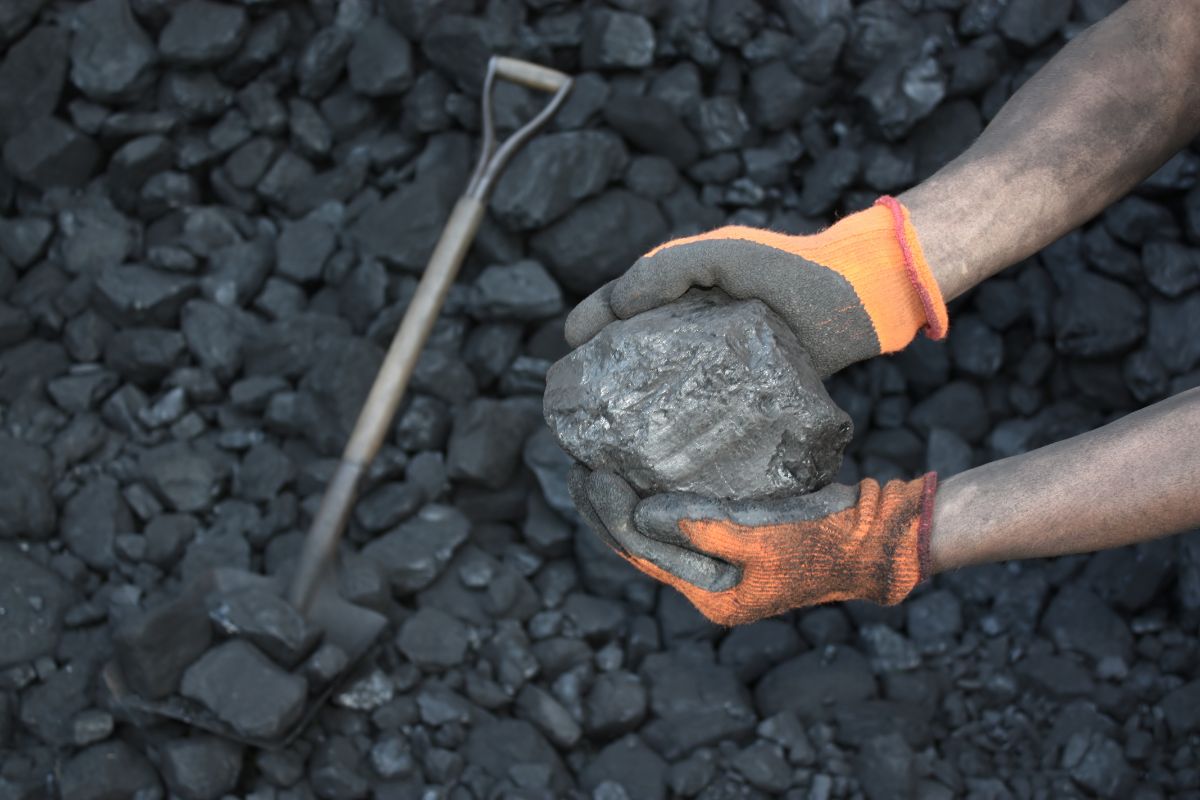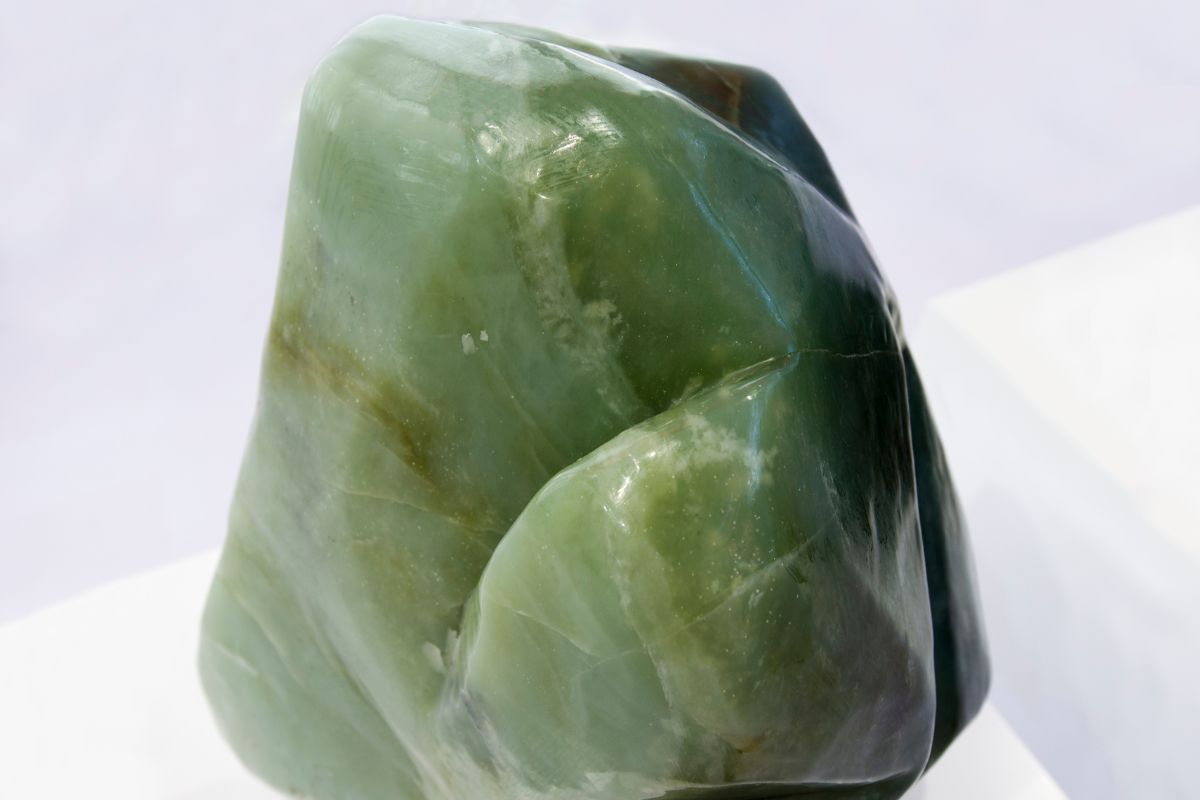Bismuth is a remarkable element that has a firm place in both scientific and metaphysical spaces.
But what is bismuth used for? Well, with its unique properties, such as a low melting point, resistance to oxidation, and low toxicity compared to other heavy metals, this element finds a variety of applications.
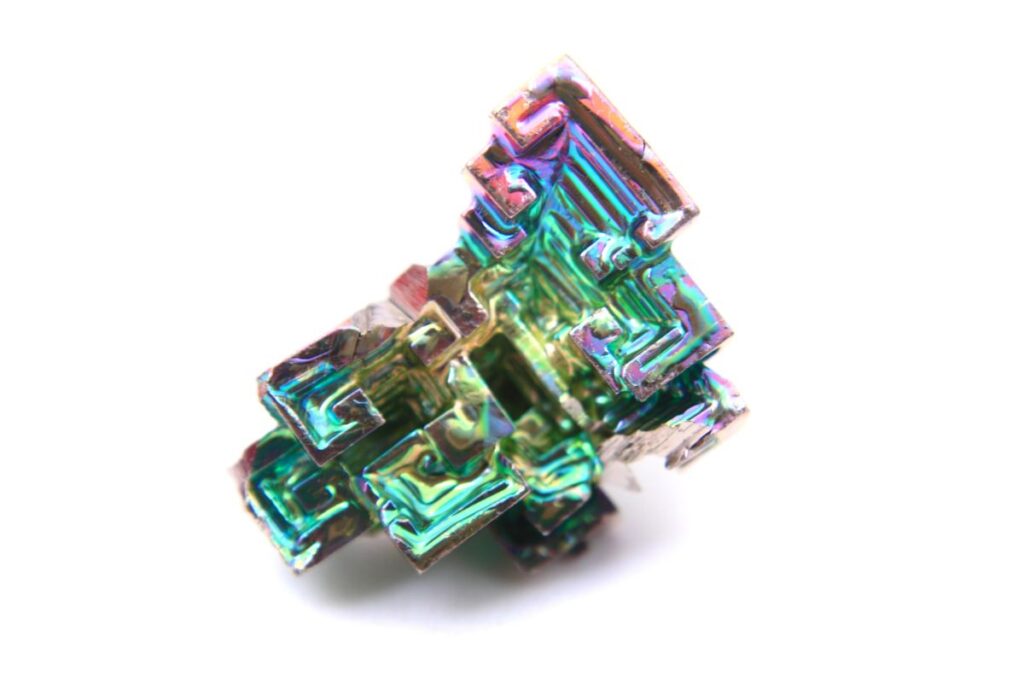
Additionally, its striking iridescent appearance, when crystallized, makes it popular among collectors.
This comprehensive guide will delve into the many uses of this fascinating element, exploring its significance in science, medicine, industry, and even art.
Scientific And Tech Applications
Let’s start with science and how bismuth is used:
Catalysis In Research
Bismuth compounds are frequently used as catalysts in chemical reactions, aiding in the creation of synthetic materials and facilitating pharmaceutical research.
Radiation Shielding
Bismuth is often used in radiation shielding due to its high density and low toxicity, making it a safer alternative to lead in some applications.
Thermoelectric Applications
Bismuth telluride is a commonly used material in thermoelectric devices that convert temperature differences into electricity or vice versa.
Bismuth In Electronics
Bismuth is finding increasing use in electronics, particularly in semiconductors.
As the tech industry looks for alternatives to lead-based solders, bismuth-based alloys are showing promise due to their non-toxic nature and reliable performance.
Optics
Bismuth-based materials are also used in optics for specialty glass. The high refractive index and low dispersion make bismuth glasses desirable for high-precision lenses.
Medical Uses Of Bismuth
Now, let’s move on to some of the uses for bismuth in the medical field:
Pepto-Bismol
One of the most popular over-the-counter remedies for stomach ailments like indigestion and heartburn is Pepto-Bismol, which contains bismuth subsalicylate.
Antimicrobial Properties
Some bismuth compounds have been found to have antimicrobial qualities, making them useful in treating certain bacterial infections.
Medical Imaging
Bismuth compounds are used in certain contrast media for X-rays, contributing to better imaging results in medical diagnoses.
Bismuth In Dentistry
Bismuth compounds are sometimes used as a component in dental fillings, providing a level of radio-opacity that enables easy observation through X-rays.
Wound Care
Some medical gauze and wound dressings are coated with bismuth to take advantage of its antimicrobial properties.
Being adept at healing physical wounds leads us nicely to bismuth’s metaphysical properties.
Metaphysical Properties of Bismuth
Now, let’s take a look at how bismuth is used metaphysically:
Spiritual Symbolism
Bismuth has long been a subject of intrigue in metaphysical circles, symbolizing transformation and progression.
Its intricate crystal structure is thought to represent the complexities of change and the interconnectedness of life itself.
Energy Balancing
Some practitioners use bismuth crystals during energy work and healing sessions. It is believed to help balance the energy centers or chakras in the body, aiding in aligning physical, emotional, and spiritual health.
The distinctive geometric shapes of bismuth crystals make them particularly appealing for such practices.
Stress Relief And Emotional Stability
People who are drawn to the metaphysical properties of bismuth often use it as a tool for stress relief and emotional stability.
The unique iridescent colors and fascinating structures are said to evoke a sense of wonder and relaxation, encouraging mindfulness and presence.
Enhancing Group Dynamics And Relationships
Bismuth is also thought to improve communication and foster cohesiveness within groups.
It is often used in team-building exercises and relationship counseling to facilitate open dialogue and mutual understanding.
Intellectual Stimulation
Many users of bismuth in spiritual practices claim that the crystal can stimulate intellectual and creative thinking, opening pathways to new ideas and higher levels of awareness.
Industrial Applications
Bismuth is also used in industrial settings for the following purposes:
Soldering And Fuses
Bismuth is often used in fuses and solders due to its relatively low melting point and its ability to expand upon freezing, which ensures a better joint.
Cosmetics
Bismuth oxychloride is commonly used as a pearlescent ingredient in cosmetics, adding a shimmering glow to products like eyeshadow and nail polish.
Paint And Pigments
Certain bismuth compounds are used in paints and coatings due to their ability to resist corrosion and oxidation.
Metallurgy
In metallurgy, bismuth is used as an agent to remove trace elements in the purification of certain metals.
Its low melting point and ability to absorb trace metals make it invaluable in this role.
Polymers And Plastics
Bismuth compounds act as catalysts in the production of some polymers and plastics. They assist in the polymerization process, leading to materials with desirable mechanical properties.
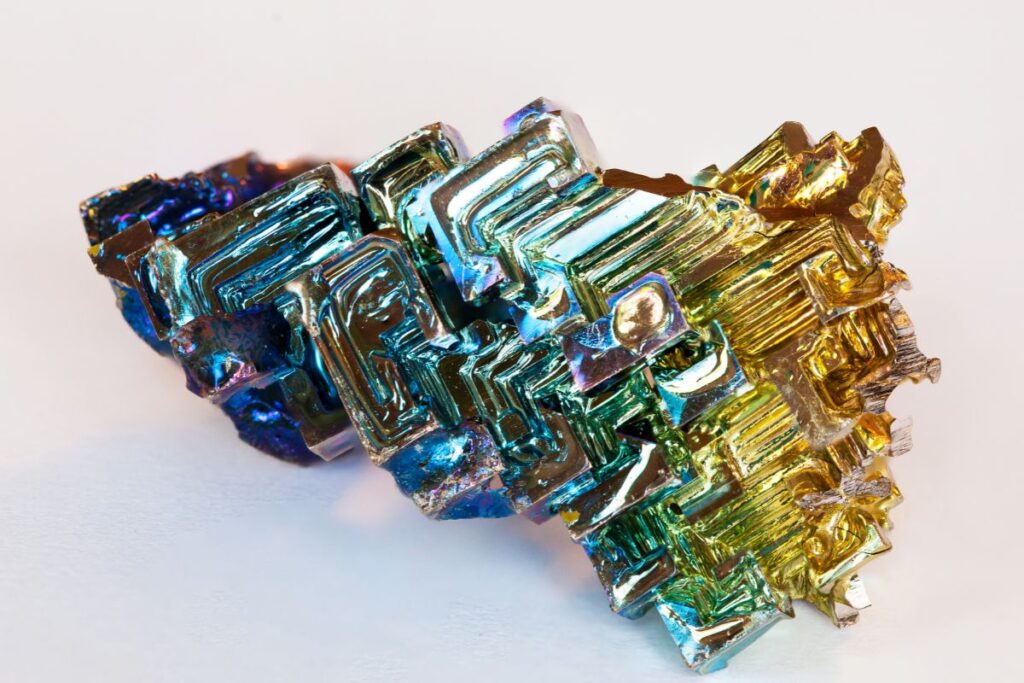
Additional Uses Of Bismuth
We’ve listed a lot of uses for bismuth, but we have a few more to share below:
Bismuth Crystals
The iridescent colors of bismuth crystals make them a popular choice for collectors. These crystals are often grown in labs and sold as decorative items.
Jewelry And Art
Because of its low toxicity and beautiful appearance, bismuth is also used in certain types of jewelry and art pieces.
Angling Weights
Given its low toxicity compared to lead, bismuth is sometimes used in making fishing sinkers and other angling weights.
Culinary Aspects
In some places, bismuth is used in tableware and utensils, given its non-toxicity and unique aesthetic appeal.
Fun Crystal Facts: Bismuth
Let’s look at a few more fun facts about bismuth to understand why it is so widely used:
Unique Geometry: Bismuth crystals are known for their stair-stepped structure, which gives them a fascinating geometric shape.
Rainbow Colors: The crystals display a wide range of colors due to thin-film interference, the same phenomenon that creates rainbows in soap bubbles.
Easy to Grow: Bismuth crystals can be easily grown at home using simple techniques, making them popular among amateur scientists.
Rare in Nature: While bismuth is often found combined with other elements, finding naturally occurring pure bismuth crystals is extremely rare.
Stable and Non-Toxic: Unlike many other metals, bismuth is not toxic and does not bioaccumulate, making its crystals safe to handle.
Health And Regulatory Status Of Bismuth
Bismuth and its compounds are largely considered to be safe for most uses, especially compared to other heavy metals like lead or mercury.
However, it’s crucial to follow safety guidelines and exposure limits set by occupational safety organizations and governmental bodies.
Conclusion
Bismuth serves multiple roles in our lives, from essential industrial applications to fascinating recreational uses.
Its colorful, geometric crystals captivate hobbyists and artists, while its low toxicity and unique properties make it indispensable in various scientific and medical applications.
Did you know that you can make your very own bismuth crystals?
- 15 Crystals That Cannot Be Exposed To The Sun - January 7, 2024
- Malachite Vs Fuchsite – Benefits And Uses - January 7, 2024
- Malachite Vs. Green Jasper: Benefits And Uses - January 7, 2024


